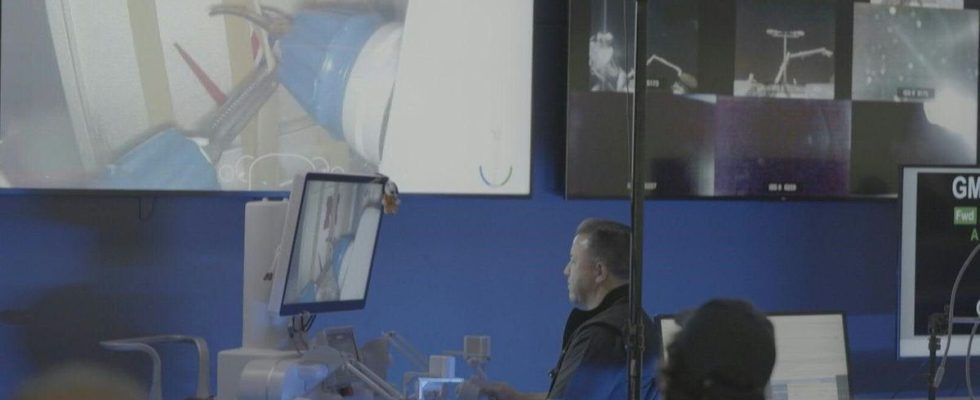Published on
Updated
Reading 2 min.
Surgeons succeeded this weekend in remotely controlling a small surgical robot located in the International Space Station, and in simulating from Earth basic techniques used during operations.
This first represents a new step for the development of surgery in space, which could become necessary to treat medical emergencies during manned trips lasting several years, for example to Mars.
These advances could also help develop remote surgery on Earth, benefiting remote areas lacking surgeons.
The robot, developed by the company Virtual Incision and the University of Nebraska, is called spaceMIRA. He took off for the International Space Station (ISS) at the end of January, aboard a cargo carried by a SpaceX rocket.
It was placed inside a microwave-sized box, making it easy to transport.
Last Thursday, it was turned on and inspected by astronaut Loral O’Hara, currently aboard the flying laboratory.
The experiment then took place on Saturday, conducted from Virtual Incision’s headquarters in Lincoln, Nebraska. It lasted approximately two hours and involved six surgeons.
They were able to remotely control the robot, which is equipped with a camera and two arms.
“The experiment tested standard surgical techniques like grasping, manipulating and cutting tissue“, said Virtual Incision. The biological tissue was simulated here by an elastic band.
In a video shared by the company, we can see one of the arms equipped with pliers grabbing the elastic to stretch it, and the other arm equipped with a scissor cutting it, in order to imitate a rubber banding technique. dissection.
The difficulty of such an operation lies in the delay between Earth and the ISS, which was 0.85 seconds.
To evaluate the impact, the complete data recovered will be compared with similar tasks carried out with the same equipment, but on Earth.
However, the experience has already been qualified “great success by all surgeons and researchers, and there have been few if any glitches” said Virtual Incision. “Surgeons believe this experiment will change the future of surgery“.
The project received financial assistance from NASA.
The American agency estimates that with longer space exploration missions, “the potential need for emergency care is increasing, including surgical procedures ranging from simple stitches on cuts, to more complex activities“.
